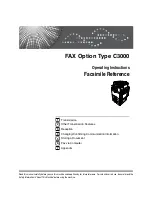
9
Routine Cleaning and Oiling
Routine cleaning and oiling is very important to the longevity of your quilting machine. Brush out the fuzz
from around the hook and foot. Change your needle regularly to avoid thread breakage, tension problems and
needle breakage. A worn needle can mean skipped stitches, shredded thread and a weakening of the needle
itself. These things can lead to stitch quality issues.
Lint has a tendency to build up in the bobbin case. A tiny amount of lint can cause poor stitches. Check the
bobbin case each time you change the bobbin to keep it clean. We suggest using a soft bristle brush to wipe out
the bobbin case and the bobbin area. Canned air only blows the lint around. By using a soft bristle brush you
collect the dust on the brush. Occasionally, place a drop of machine oil on a cotton swab to wipe out the bobbin
case.
Keep your table clean of dust and oil. Clean the bars and carriage deck regularly for smooth movement.
Oiling is extremely important to the longevity of your quilting machine. Failure to oil your machine regularly
can void your warranty.
The one oiling spot marked with red arrow is marked with red paint on your machine. An oil bottle is included
with your machine. The one oiling spot marked with a blue arrow contains a dip stick. Remove the dip stick by
lifting it up with a finger nail or screw driver. Place drops of oil in this hole.
Recommended oiling: After every finished quilt place 3 to 4 drops of oil in the indicated spot.
At this
time make sure oil is present on dip stick. If not add 3-4 more drops of oil. Run machine to lubricate. For
correct oil, when you are out of oil please purchase High Grade Sewing Machine oil. (Note: the machine
pictured here is before complete assembly from factory; your machine has more components attached.)
Oil point top of machine
Oil Reservoir with dip stick
Oil Reservoir with dip stick removed
Oil Dip Stick
Содержание Sewing Machine
Страница 1: ...Owner s Manual ...
Страница 25: ...25 ...










































